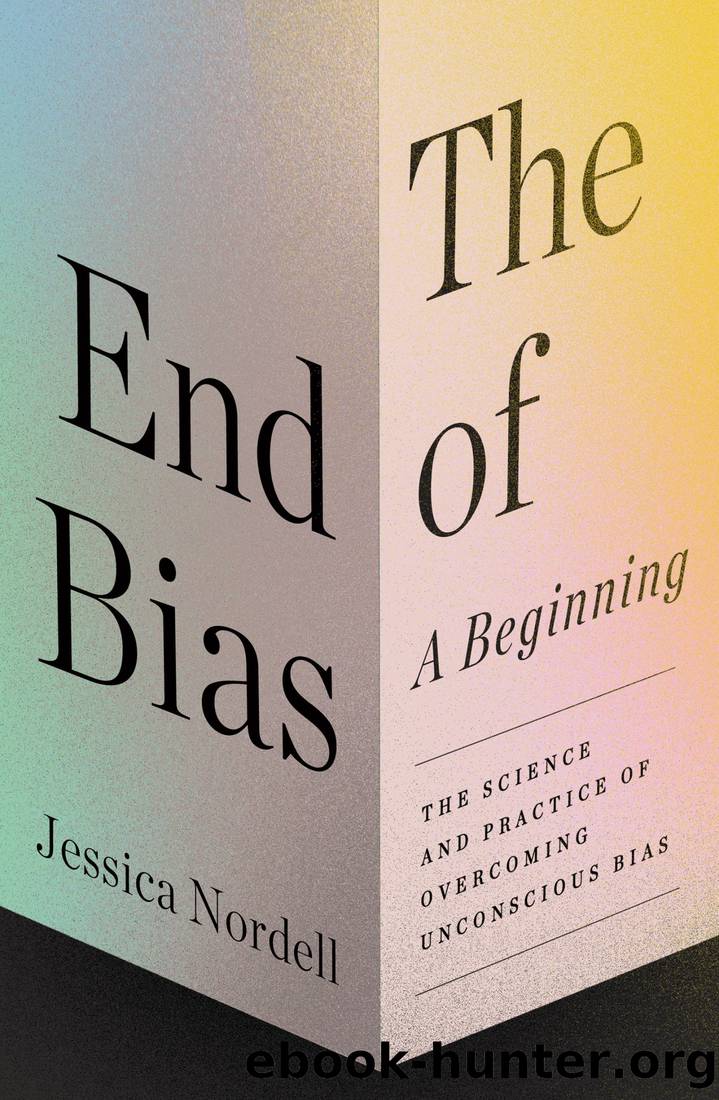The End of Bias: A Beginning: The Science and Practice of Overcoming Unconscious Bias by Jessica Nordell

Author:Jessica Nordell [Nordell, Jessica]
Language: eng
Format: epub
ISBN: 9781250186188
Google: t4NsyAEACAAJ
Publisher: Henry Holt and Company
Published: 2021-09-20T23:00:00+00:00
8
Dismantling Homogeneity
In spring of 2013, a twenty-eight-year-old Brazilian-born, U.K.-dwelling journalist named Caroline Criado-Perez began what she thought would be a quiet campaign to keep women on British currency. The face of prison reformer Elizabeth Fryâthe only woman on a banknoteâwas to be replaced by Winston Churchill, so Criado-Perez started an online petition to reverse the decision and its âmessage that no woman has done anything important enough to appear.â Soon, women were protesting outside the Bank of England dressed as historic figures, like Boudicca, warrior and Celtic rebel queen.
When the Bank of England announced that it would now feature Jane Austen on the ten-pound note, Criado-Perez began receiving threats on Twitterâa torrent. At one point, she was receiving nearly one rape or death threat per minute. When she complained to Twitter, the company suggested she report the tweets. This required completing a nine-part questionnaire for each threat. The police finally intervened, and two people were ultimately arrested and jailed. Under pressure, Twitter rolled out a âreport abuseâ button.1 This provided a different route to the same cumbersome nine-part questionnaire.
But the abuse and harassment didnât stopânot for Criado-Perez, and not for untold thousands on the site. A 2020 analysis found that of the tweets women congressional candidates in the United States receive, 15 to 39 percent are abusive, compared to on average 5 to 10 percent of those received by men. Abuse escalates for women of color: Amnesty Internationalâs review of tweets received by women journalists and lawmakers in the United States and U.K. found that as a group Black, Asian, Latina, and mixed-race women are 34 percent more likely to receive abusive tweets than White women. Black women alone are 84 percent more likely to be harassed than White women on Twitter. Of the twenty-six thousand abusive tweets sent in half a year to women in Parliament in the U.K., half were directed at a single Black woman MP. In the United States, the candidate with the highest rate of abuse on Twitterâat 39 percent of all messagesâwas Ilhan Omar, a Somali American congresswoman.2
The problem has been endemic at Twitter from its very beginning in 2006. In 2018, Twitter CEO Jack Dorsey finally admitted that the company had failed to anticipate how it could become a breeding ground for abuse. But according to former employees, the founders also inadvertently built the mechanisms for abuse into the product architecture. Anyone can tweet to anyone; likes, retweets, and the hierarchy of visible responses to tweets have all optimized Twitter for harassment.3
âTwitter is good at two things: real time information and abuse,â Leslie Miley, a former engineering manager at Twitter, told me. âThey both are disseminated in the exact same way. The vectors that allow news content to go viral allow trolls and abuse to go viral.â4 Twitterâs âalgorithmic timelineâ prioritizes the content it shows according to what it deems most engaging and relevant. People engage highly with negative content that arouses anxiety and anger, whether theyâre reading news or harmful comments.5 While
Download
This site does not store any files on its server. We only index and link to content provided by other sites. Please contact the content providers to delete copyright contents if any and email us, we'll remove relevant links or contents immediately.
Invention by James Dyson(729)
Thinking Better by Marcus du Sautoy(686)
The Ten Equations That Rule the World by David Sumpter(677)
Concepts of Space by Jammer Max;(662)
God and the Multiverse by Victor J. Stenger(635)
Wanting by Luke Burgis(633)
Merchants of Doubt by Erik M. Conway(632)
How We Got to Now by Steven Johnson(606)
Factfulness by unknow(572)
The Surrender Experiment by Michael A. Singer(548)
The Smallest Lights in the Universe by Sara Seager(521)
On Creativity by Bohm David(501)
Floods, Famines, and Emperors: El Nino and the Fate of Civilizations by Brian Fagan(485)
Ancient Knowledge Networks by Eleanor Robson;(483)
Why Birds Matter by University of Chicago Press(475)
The Science of Being Lucky: How to Engineer Good Fortune, Consistently Catch Lucky Breaks, and Live a Charmed Life by Peter Hollins(467)
The Scientist and the Psychic by Christian Smith(465)
The Oxford Handbook of Philosophy of Mathematics and Logic by Stewart Shapiro(458)
Flood by Design (Design Series) by Mike Oard(431)
